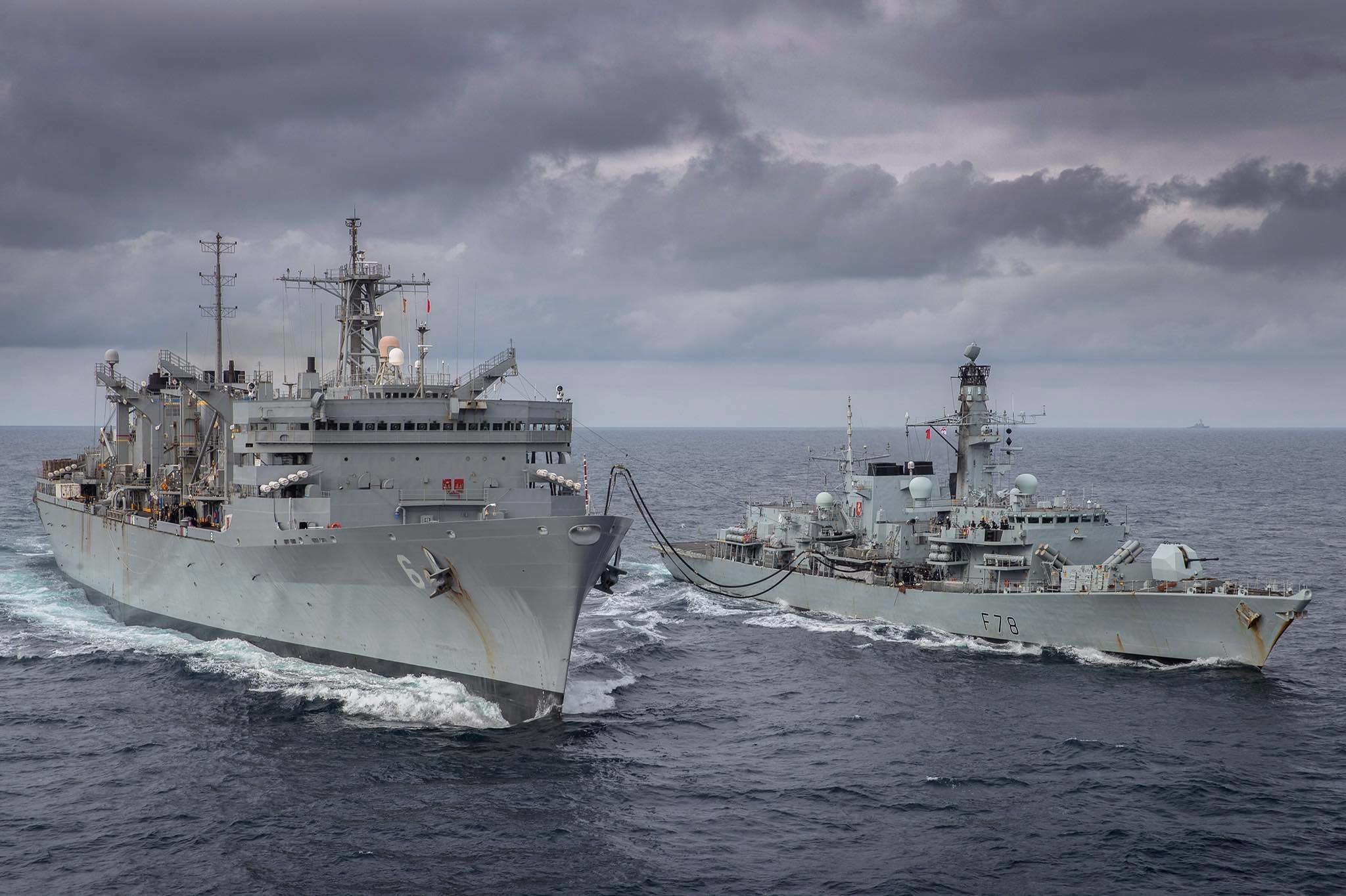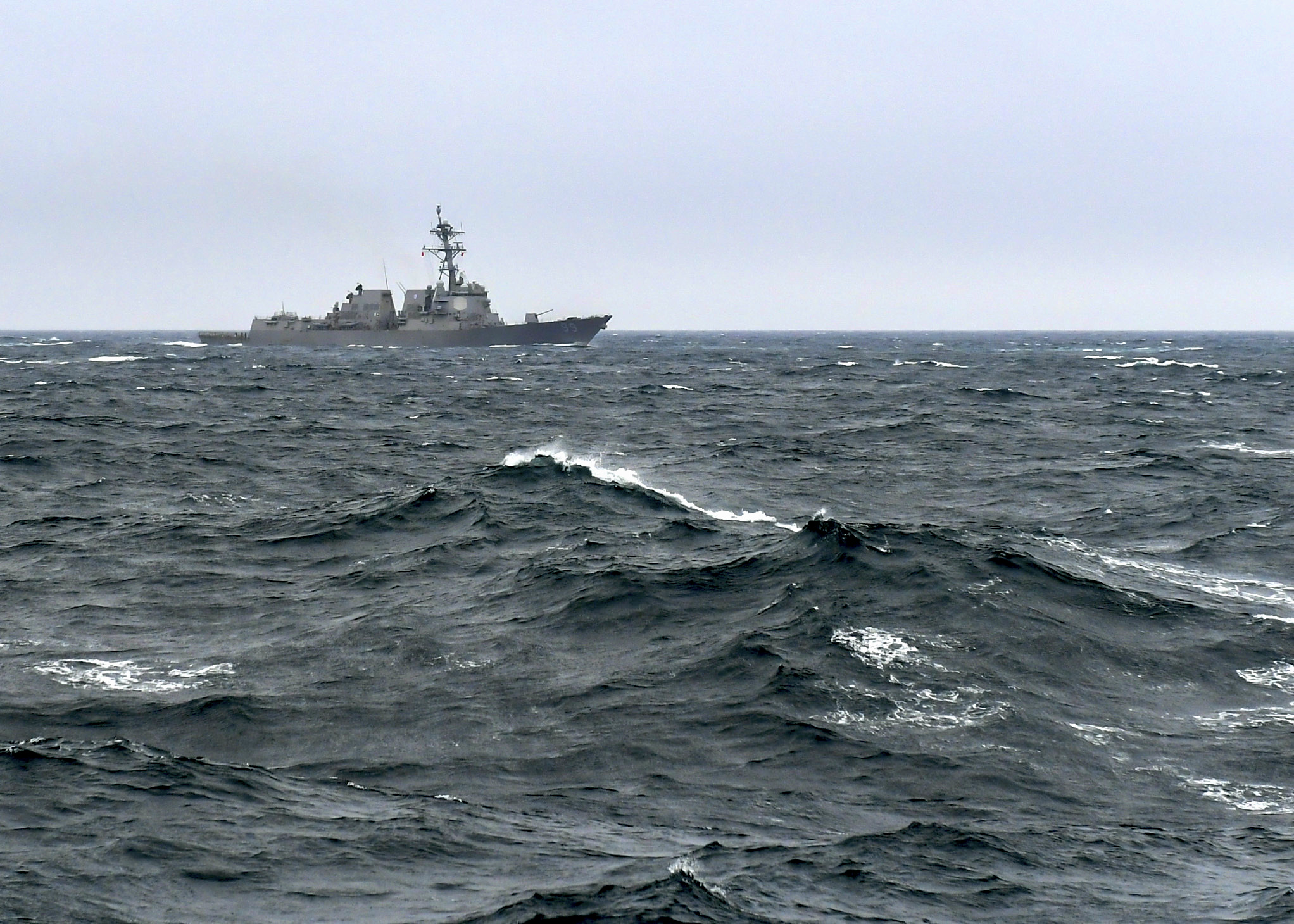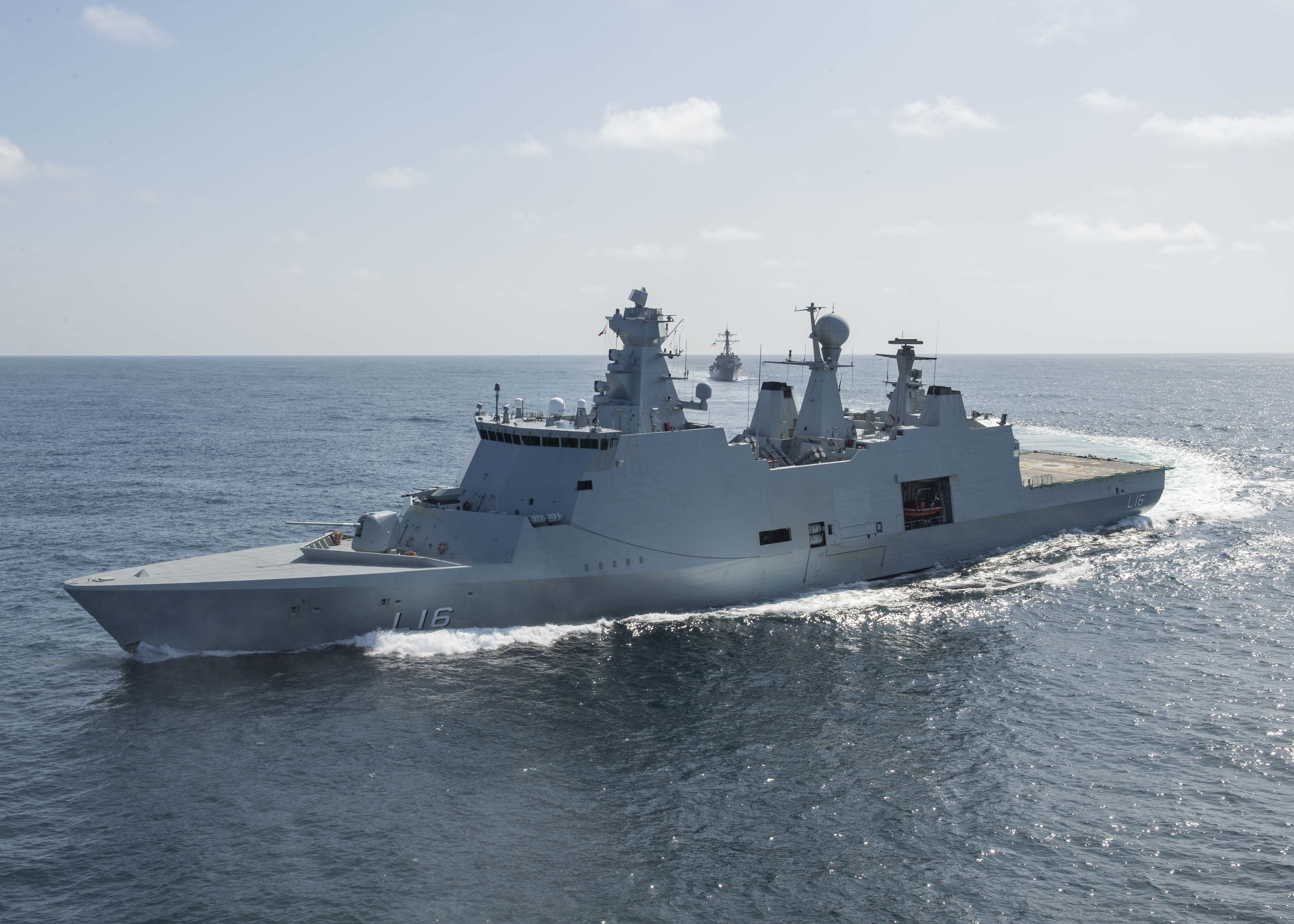
The U.S. Navy’s two key advantages in the Arctic are its partners and allies and the flexibility of the forces it could bring to bear, the head of U.S. naval forces in Europe said today.
Adm. Robert Burke said “Russians’ increasingly aggressive intentions” and China’s claims in the Arctic are making the theater all the more important for planners and busy for operational forces.
He mentioned an October 2020 visit to Iceland, just months after he had taken command of U.S. Naval Forces Europe, U.S. Naval Forces Africa and Allied Joint Forces Command Naples, where the dozen American P-8A maritime patrol aircraft operating out of Keflavik were very busy.
“You may recall [in 2019] there were news source reports, open-source reports of 10 Russian submarines operating in the Arctic, in the North Atlantic. And from there, they head into the Atlantic, and they go there to exercise their ability to hold Europe and the continental United States at risk with land-attack cruise missiles. And some of those missiles in the not-too-distant future are going to be capable of hypersonic speeds. That’s a real threat, and that’s something that we have to be ready to address,” he said while speaking at a virtual event cohosted by the U.S. Naval Institute and the Center for Strategic and International Studies.
“The thing that concerns me most about the Arctic right now, militarily, is Russia, and I think their militarization of the Arctic on their northern coast I think is the most concerning. They’re putting Kalibr-class cruise missiles on at this point one icebreaker. … They’ve got coastal defense cruise missile sites at chokepoints along their northern flank. They’ve made excessive territorial water and, at least at one point, exclusive economic zone claims along the Northern Sea Route, which are not internal waters,” he said.
“That speaks to their intent, the fact that they’re arming those points. Their aggressive actions have led to a lot of countries, including and I would say especially the former Warsaw Pact allies, to be on edge. … Now they’re parading their Iskander missile systems in the Kaliningrad enclave, putting every single Baltic country at risk. They’re doing these dangerous and unsafe intercepts of U.S. and NATO aircraft. Syria, Libya, they’re weaponizing the Mediterranean.”
Burke said that, compared to U.S. commanders operating in other regions of the world, his naval forces are supplemented by “some extremely high-end, capable allies and partners, with navies that get underway and operate just like the U.S. Navy, and they operate with us every day. And when we say, hey, can you, they’re like, heck yes. U.K., France, to name two extremely reliable, extremely capable partners. Canada, Norway, all contribute significantly to the theater undersea warfare fight. Denmark is expanding their capabilities. And now almost every one of those nations I mentioned has significant airborne maritime patrol reconnaissance aircraft – if not the P-8, a version closely resembling the P-8’s capabilities,” he said.
“Many of them have bought into a version of the P-8, which has incredible legs and incredible capability over our older ones. And then their surface combatants today are incredibly capable too. The surface combatants today are in certain acoustic environments that the Atlantic presents, in geographic parts of the Atlantic, are allowing us to do quite well against sixth-generation Russian submarines.”

In addition to relying on partner navies to help monitor Russian submarine activity, Burke said the flexibility of U.S. forces would be important if conflict ever broke out.
He noted that, as NAVEUR, he would command both U.S. 6th Fleet, based in Naples, Italy, and U.S. 2nd Fleet, based in Norfolk, Va. The combination of the two, he said, is a tailorable, flexible and scalable naval force.
“If things went off perfectly the way I would like them to, I would put 6th Fleet in the north first and you’d have (Vice Adm.) Woody Lewis and 2nd Fleet come in and guard the Atlantic transitway, the Mediterranean, things like that. They might not, things might pan out such that Woody Lewis goes to the north,” Burke said, describing how he would want to best leverage his two “maneuver arms.”
“But the other real beauty here is, Woody Lewis is also dual-hatted in NATO as a joint force commander, he’s Joint Force Commander [Norfolk], so he’s my peer as a NATO Commander and now there are three joint force commanders” to cover Northern Europe, Southern Europe and the Atlantic. NATO Supreme Allied Commander Europe (SACEUR) U.S. Air Force Gen. Tod Wolters would himself have three maneuver arms, then, for a naval battle, “so he’s got the same tailorability, flexibility, scalability to move things around and allow us to apply pressure all the way around, even if [Russian forces] only apply pressure at one point. And that’s what we would intend to do.”
The preference to send 6th Fleet forces to the Arctic as the first responders to a conflict is likely due to the experience they’ve been amassing in the region. Burke said during a question-and-answer session that from May to November last year U.S. surface ships had a continuous presence in the Arctic, including surface action groups operating near Russia’s Northern Fleet in the Barents Sea. Over the last two years, all four Rota, Spain-based forward-deployed destroyers have spent time in the Arctic, and importantly they’ve been training with partner navies to learn to operate safely and comfortably in icy waters.

Highlighting Denmark and Norway in particular, Burke said, “their navies are not all ice-hardened ships, but they routinely operate all of their navies in marginal ice. So how do they do that? Well, they’re very skilled, they know the risks, they know how to read the ice, they know how to read the flow. We are now – having spent some time training with them, doing ship exchanges back and forth for different purposes – our DDG [commanding officers] are going into the fjords in marginal ice, learning how to mitigate that risk intelligently.”
Burke said the threats across European waters range from Russian military buildup hotspots in the Baltic, Mediterranean and Black seas; instability in places like Syria and Libya; and the flow of migrants from Northern Africa into Southern Europe.
Additionally, he pointed to China as another destabilizing force in the area. China has now bought an interest in a dozen European ports. Particularly, Burke said, China bought the Port of Piraeus in Greece, which used to be home to U.S. destroyer squadron, and is working to buy a port in Croatia that does maintenance and modernization work on U.S. warships.
“Are NATO countries going to be able to count on those ports for free trade? And if NATO has to defend Europe, will they allow us into those ports to refuel, resupply, do repairs, rearm? We don’t know if we’ll be able to count on that, it’s a troubling pattern and our European partners are increasingly aware and awakened to this potential threat,” Burke said.





